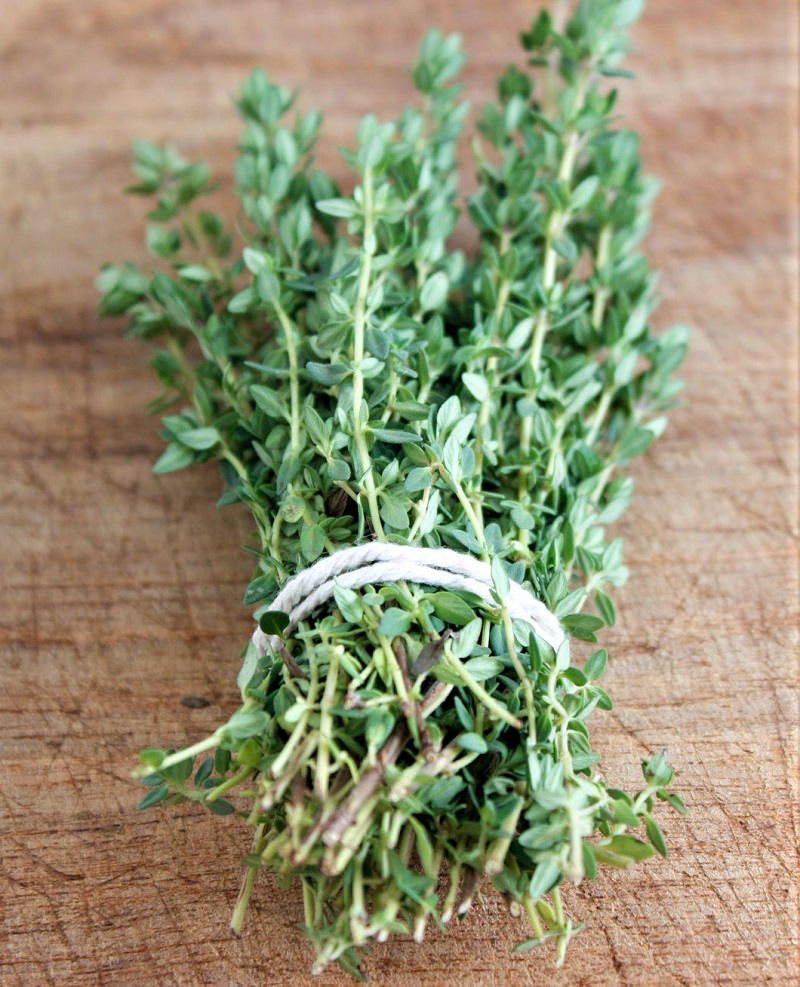
There are both fragrant and ornamental types. Our favorites, of course, are the varieties that add a savory note to slow-simmering summer soups, grilled meats, and vegetable dishes.

Beautiful, delicious, and sweet-scented, culinary thyme represents summery sublimity in the garden. The herb is singularly well-matched to growing conditions in the backyards of milder climates. You can position this perennial evergreen anywhere with a bit of sunlight: by a garden path, beneath a window, or at the edge the back patio.
Thyme’s only condition, other than sunlight, is that it be near at hand, so that you may snip what you need for the kitchen.
Growing Thyme in Your Backyard
Contents
You can plant thyme in your garden any time after the ground’s temperature reaches 21°C. That usually happens about 2 to 3 weeks before the last frost. When it does, just clip a three-inch cutting from the tip of a stem then apply rooting hormone on the exposed portion. Plant the cutting in either sterile sand or vermiculite.
Roots will emerge within six weeks. You can transfer the plant to a small pot to let the root ball form. From then on, you can move the plant to a larger pot or bring it outdoors to plant directly into the ground.
Below are a few tips on growing thyme in your backyard.
Planting Thyme in the Garden
Plant thyme 12 to 24 inches apart in free-draining soil with an optimal pH between 6.0 and 8.0. In early spring, you can fertilize the planting bed with compost, but not much soil amendment is necessary. Water the plants thoroughly. Most varieties of thyme are drought-resistant. They will only require a thorough watering when the soil is completely dry.
Thyme attracts bees and hoverflies. The latter eat a wide range of pests, including aphids and thrips. Grow thyme alongside strawberries, broccoli, tomatoes, eggplants, cabbages, and Brussels sprouts. These plants will benefit from their proximity to the herb.

Pruning and Plant Care
Prune your thyme plants in the spring and summer to contain their growth. Thyme loves to be pruned. Your plants will repay you by growing bushier, thus promising a more abundant harvest. If you live in a region that sees cold winters, remember to lightly mulch around the plants after the ground freezes.
Take care to keep your plants dry. You should and avoid overhead watering, in particular, to prevent root rot and grey mold.
Thyme plants are hardy, but you will need to divide or replace them after three or four years. Older plants become woody and their leaves are less flavorful. You can take some of the cuttings and plant them indoors in pots.

Harvesting Thyme
Cut fresh thyme stems in the morning, leaving behind the tough, woody sections. Allow at least five inches of growth to remain intact so that the plant can still flourish. Regular harvesting not only encourages more growth but also shapes a visually appealing rounded form.








